Lenin and Maimonides
Isaac Babel’s Red Cavalry stories, a fictionalized account of his service with a Bolshevik army unit invading Poland, originally concluded with a poignant story about Ilya, son of a Hasidic rebbe and “the last of the Princes” of that line. We have met Ilya in an earlier story, so we are especially moved that the narrator encounters him on the verge of death. Among Ilya’s things he discovers symbols of his two loves, Judaism and Bolshevism:
His things were strewn about pell-mell—mandates of the propagandist and notebooks of the Jewish poet, the portraits of Lenin and Maimonides lay side by side, the knotted iron of Lenin’s skull beside the dull silk of the portraits of Maimonides. A lock of woman’s hair lay in a book, the Resolutions of the Party’s Sixth Congress, and the margins of Communist leaflets were crowded with crooked lines of ancient Hebrew verse. They fell upon me in a mean and depressing rain—pages of the Song of Songs and revolver cartridges.
Lenin and Maimonides, Communist leaflets and Hebrew verse: What could be more different, in language, in sensibility, in world view? The narrator remembers meeting Ilya at his father’s when, it turns out, Ilya was already a party member but concealing it for the sake of his mother. The earlier story about Ilya begins with a mystical incantation to the mother as the symbol of Hasidic tradition, and so when Ilya leaves home to command a Bolshevik regiment, we grasp which of the two contradictory loyalties has won.
How could one maintain allegiance to both? The name “Ilya”—Elijah—suggests an answer, since Elijah is, of course, associated with the coming of the messiah. The Russian philosopher Nikolai Berdyaev regarded messianism as deeply characteristic of both Russians and Jews—of Ilyas and Elijahs—both of whom readily translated religious longings into revolutionary politics.
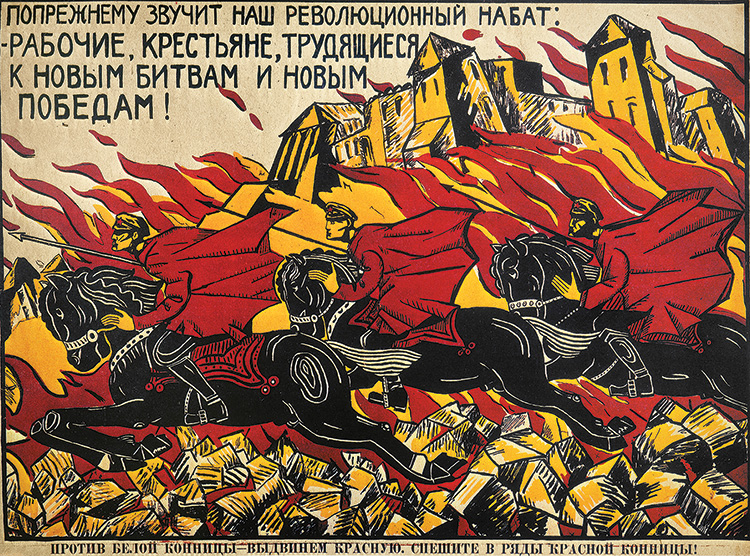
Before encountering Ilya, the narrator has been tossing Trotsky’s pamphlets to peasants, and both Trotsky the Jew and Lenin the Russian figured as symbols of Bolshevism. In fact, three of the seven original members of the Bolshevik politburo were Jews, not counting Lenin himself, who was one-quarter Jewish. Jews played a disproportionately large role not only in Bolshevism but in the whole Russian revolutionary/terrorist movement. The foremost historian of Russian terrorism, Anna Geifman, notes that early in the 20th century, the entire society was convulsed with terrorism. Between 1905 and 1907, 4,500 government officials and 2,180 private individuals were killed, as well as others being wounded. Between January 1908 and May 1910, authorities recorded just fewer than 20,000 terrorist acts (and they must have missed ones in remote areas). According to Geifman, murder became more common than traffic accidents.
She notes that among the Russian Empire’s 136 million people, only 5 percent were Jews, but Jews constituted about 50 percent of the membership of revolutionary parties. In 1903, Chaim Weizmann explained to Theodor Herzl: “It is a fearful spectacle . . . to observe the major part of our youth—and no one would describe them as the worst part—offering themselves for sacrifice as though seized by a fever.”
To avoid inflaming anti-Semitism, many revolutionary leaders tried not to use Jews to execute terrorist acts, but some of the most violent groups (so-called Maximalists and anarchists) had no choice because they were almost entirely Jewish. Geifman quotes the widely circulated witticism about the execution of 11 anarchists, 15 of whom were Jews.
For traditional Jews, such actions were repellent. As early as the 1870s, Jewish families sat shiva when a child joined the revolutionaries. Jewish revolutionaries, in turn, did not regard themselves as representing Judaism. They deliberately provoked reprisals against Jews when they threw bombs at patriotic or religious gatherings, injuring children and the elderly, as well as when they used synagogues as strategic sites for gun battles. Traditional Jews, of course, regarded such actions as both sacrilegious and dangerous. “They shoot, we are beaten” was the sentiment.
The traditional explanation of Jewish revolutionary terrorism was economic and other types of oppression, but, as Babel’s story suggests, idealism and messianism also played a role.
A famous story concerning Yaakov Mazeh, the government-appointed chief rabbi of Moscow, has him telling Trotsky (nom de guerre of Lev Davidovich Bronstein) that the Trotskys conduct the uprisings but the Bronsteins pay the price. In fact, the Jews were to suffer a great deal because of what Paul Hanebrink calls, in the subtitle of his book A Specter Haunting Europe, “the myth of Judeo-Bolshevism.” Blaming the Jewish community for Bolshevik crimes led to enormous violence against Jews during the Russian civil war and in the interwar period throughout Europe. Except for during the two-year Nazi-Soviet alliance, the myth was central to Nazi propaganda.
Hanebrink offers impressive examples of such propaganda, sometimes believed by people who should have known better. He comments shrewdly on how lies came to seem true: “Examples of Judeo-Bolshevik power were endlessly cross-referential: the ‘unmasking’ of Jewish revolutionaries in one place gave credibility to accusations of Jewish subversion in another. This circulation and mimetic reproduction had a ‘reality effect.’” The myth persisted, often in disguised form, after World War II and, in Hanebrink’s view, has recently metastasized yet again.
The great scholar Jacob Talmon, commenting on the association of Jews with revolution, called the problem a “foundling, a waif, an abandoned child” claimed by no one. Jews knew they couldn’t ignore it but still wished “they had never heard of it.” Hanebrink boldly directs our attention to it and the troubling questions it raises.
In what sense is Judeo-Bolshevism a myth? Judeo-Bolshevism is actually a bundle of ideas, including beliefs that: (1) Jews were disproportionately represented among Communists and revolutionaries, (2) Communists, like Nazis, committed unspeakable crimes, and (3) Jews should be held accountable for these crimes, because there was something Jewish per se about Communism.
Across Eastern Europe, the myth led to pogroms and arrests of Jews, who were blamed for national setbacks. So historically dangerous has it proved that some have denied all three premises out of hand. They have added that those who accept any part of the myth fear nonexistent or grossly exaggerated dangers. This is more or less the tack that Hanebrink takes. He traces how the “reality effect” fed on itself and shows how the myth adapted itself to changing circumstances and different countries. As he puts the point, “the meaning of ‘Jewish Bolshevik’ changed in translation . . . [The myth] was used to delegitimize political alternatives. But the enemies were very different.” The most fascinating parts of this study trace unexpected permutations. Refute one version of this Hydra myth, and two more arise in its place.
Outside the Soviet Union, how Jewish were Communist movements? The answer varies country by country and decade by decade, of course, but sometimes the Russian pattern was repeated. When, in 1919, Communists proclaimed a Soviet republic in Hungary, Hanebrink notes, 30 of the 48 people’s commissars were Jews, including the regime’s head and its secret police director. By the time Communists took over Poland in the late 1940s, there were too few Polish Jews left to constitute much of the party, but 30 percent of the secret police leadership were Jewish, including not only secret police chief Jakub Berman but also the person running the department charged with penetrating the Catholic Church and the person Anne Applebaum has described as “the chief secret police interrogator” in Iron Curtain: The Crushing of Eastern Europe, 1944–1956, a work that contrasts instructively with Hanebrink’s. In Hungary, Applebaum notes, “all of the leading Hungarian communists . . . were of Jewish origin, as were many of the founders of the political police and the Interior Ministry.” One may surmise that this was Stalin’s way of directing hatred away from the Soviet Union, an age-old policy of using Jews as a lightning rod. Whatever the reason, it meant that Communist terror often showed a Jewish face in Hungary.
There are many ways of coming to terms with these unwelcome facts. Hanebrink correctly points out that even though Jews were disproportionately represented among Communists, most Jews were not Communists. True enough, but this answer does not entirely dispose of the matter. When growing up, I remember being given books with capsule biographies of great Jews of history. I distinctly remember one that began with Abraham and ended with Mel Allen (really Melvin Allen Israel, the book instructed), the longtime sportscaster for the New York Yankees. I cannot count the number of times I heard that of the four greatest thinkers shaping the modern world—Marx, Darwin, Freud, and Einstein—three were Jews. If Jews claim honor, and honor themselves, for Marx, Freud, and Einstein, how can they entirely avoid responsibility for Trotsky?
As extenuation, Hanebrink proposes that many Communist Jewish men and women were idealists: “All believed in the power of ideas to transform the world; all saw a future filled with limitless possibility; all were convinced in the rightness of their beliefs.” But their sincerity is not at issue. It is entirely possible that Jewish Bolsheviks, like their comrades, committed horrendous acts for idealistic reasons. Hanebrink at last concludes that the truth is beside the point. “[A]ssessing the idea of Judeo-Bolshevism as a matter to be verified or falsified is profoundly misleading,” he explains. “[T]he purpose of studying the Judeo-Bolshevik myth must be not to determine how true it is, but to understand why it has been and remains so powerful.” But myths respond to some real experience, and so surely ascertaining what is true would help us understand their power and appeal. In any case, if truth is irrelevant, how can we call something a myth?
In my view, the part of the myth that matters is what I have called it the third premise. Even if Jews are disproportionately represented among Communists and Communists committed unspeakable crimes, can Jews as a community be held morally responsible? If that is the question, it is crucial that, so far as I know, none of the Jewish Communists were acting as Jews. One reason this fact is so important is that the idea of Judeo-Bolshevism rested upon the lie propounded in the forged Protocols of the Elders of Zion—the most widely circulated anti-Semitic tract in history—that world leaders are actually fronts for the hidden elders and knowingly act to ensure their domination of the world. Since Bolsheviks themselves proclaimed their aim was world revolution, all that was needed was to describe the Bolsheviks as working for the elders.
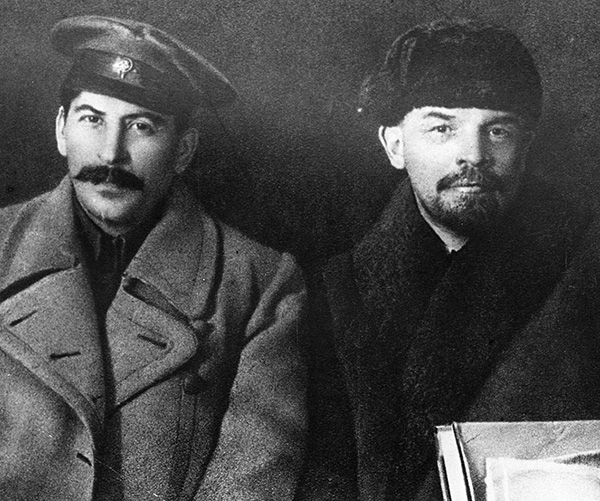
That is entirely false, and not only because there were no such elders. Bolshevik Jews—not just Trotsky and Comintern leader Zinoviev—did not consider themselves to be acting as Jews or for the Jews. Hungarian Communist leader Mátyás Rákosi, one of the “little Stalins” ruling Eastern Europe after World War II, was, although Jewish, given to anti-Semitic remarks. On one occasion, Applebaum notes, the speaker of the parliament was provoked to snap: “your mother was a Jew and do not deny your mother.” The Judeo-Bolshevik myth notwithstanding, it was precisely by repudiating their Jewishness that these Jews became Communists.
I can illustrate this with a dark Eastern European joke. In 1989, as Communism fell in Poland, rebels toppled the statue of Felix Dzerzhinsky, the Polish founder of the Soviet secret police. That was a mistake, the joke goes, because Poles should have honored Dzerzhinsky as the Pole who killed the most Russians! The humor derives from the fact that Dzerzhinsky killed Russians neither because they were Russians nor because he was a Pole. By the same token, however many Gentiles Trotsky may have murdered, he did so neither because they were Gentiles nor because he was a Jew.
Understandably appalled by the harm caused by the Judeo-Bolshevik myth, Hanebrink strays into denying its second premise: He presents Bolsheviks as not all that bad and treats fears of them as “paranoid.” For instance, he faults an anti-Bolshevik British journalist in Russia in 1917 who “tried to understand the causes of the revolution and why the Bolshevik Party had taken it in such a radical and (to his mind) disastrous direction” (italics mine). He disparages opponents of Bolshevism as “counterrevolutionary” even though liberals, socialists, and other Marxists regarded the Bolshevik coup itself as a betrayal of the revolution. At the same time, Hanebrink treats European fears of Bolshevism as irrational. “For many, the triumph, however short-lived, of Bolshevik regimes in the heart of Central Europe and the newfound militancy of the workers’ movement . . . gave rise to the nightmarish thought that revolutionary unrest was like a disease that respected no borders.”
But the Bolsheviks indeed believed in world revolution and said as much. They did everything possible to spread it. Applebaum cites a note to Stalin that Lenin wrote in 1920: “Zinoviev, Bukharin and I, too, think that revolution . . . should be spurred on immediately. My personal opinion is that to this end, Hungary should be Sovietized, and perhaps Czechia and Romania.” He referred to the “worldwide collapse of bourgeois democracy” as imminent. Two veterans of the Russian Revolution helped lead the Munich rebellion that proclaimed a Bavarian Soviet republic, and the Romanian regime also had important Soviet connections. The invasion of Poland described in Babel’s Red Cavalry was undertaken to spread the revolution westward. That indeed was the whole purpose of the Comintern, established in 1919. It was, as historian Richard Pipes noted, “a declaration of war against all the existing governments.”
When the Soviets occupied Eastern Europe after World War II, Hanebrink reminds us, they liberated camps, while Communists, working with other leftists, “openly contemplated measures, such as land reform, that had been nonstarters before the war and that promised to dramatically change the lives of the poorest people in the region.” Enemies of these reforms fought back with charges of Judeo-Bolshevism, descriptions of Soviet soldiers as displaying “Asiatic” features, and exaggerated tales of Soviet atrocities. To be sure, he concedes, “[l]ooting and rape were commonplace in Soviet-occupied Eastern Europe, especially in areas where the fighting had been fiercest and where military discipline was lax.” Rákosi and others did their best to counter the bad behavior.
This description makes it seem that, against orders, some rowdy soldiers got carried away. But rapes and looting were not against Soviet policy. In his celebrated memoirs To Be Preserved Forever, Lev Kopelev, a dedicated Communist, found himself in the Gulag for protesting against mass rape: “when our troops were entering German territory,” he was charged, “you engaged in propaganda of bourgeois humanism, of pity for the enemy . . . you engaged in agitation against vengeance and hatred—sacred hatred for the enemy.” Aleksandr Solzhenitsyn, then a Soviet officer, described the horrors of mass rape in his poem Prussian Nights. When Yugoslav Communist Milovan Djilas complained about such behavior, Stalin asked how he could not “understand it if a soldier who has crossed thousands of kilometers through blood and fire has fun with a woman or takes a trifle?” As for the extent of the rapes, in 1946 the Hungarian social welfare minister issued a carefully worded decree: “As an effect of the front and the chaos following it there were a lot of children born whose families did not want to take care of them . . . I ask hereby the bureau of orphanages . . . to qualify all babies as abandoned whose date of birth is from nine to eighteen months after the liberation.”
It is well known that the Soviet army liberated Nazi camps. Fewer are aware that shortly thereafter, the Soviets reopened Buchenwald and Sachsenhausen. The former became Special Camp Number Two and the latter Special Camp Number Seven. Applebaum explains that these camps “were preventative rather than punitive, designed primarily to quarantine people who might oppose the system, not to incarcerate people who had already done so.” Although these were not extermination camps, “they were extraordinarily lethal nonetheless. Of some 150,000 people who were incarcerated in NKVD camps in eastern Germany between 1945 and 1953 . . . about a third died from starvation and illness.” Ten such camps were built in Soviet-occupied Germany and were controlled directly by the NKVD (interior ministry) in Moscow.
Hanebrink deserves praise for combatting the ways in which the myth of Judeo-Bolshevism was used to blame the Jews for Bolshevik crimes and the danger of further Bolshevik conquests. Still, I wonder whether his misleading descriptions of Soviet behavior may backfire. Those who know about what happened may reason: If a historian cannot be trusted on matters that can be readily checked, why should he be trusted on other matters, like denying Jewish responsibility? Quite rightly, Hanebrink faults the controversial German historian Ernst Nolte for minimizing Nazi guilt by focusing on Soviet atrocities. Does the same logic apply the other way?
Central to Hanebrink’s argument is his rejection of the “totalitarian paradigm” and any characterization of Soviet and Nazi horrors as comparable. Such Cold War liberalism, he explains, allowed Nazis to hide behind anti-Communism and forever tainted anti-Communism with its origins in the Judeo-Bolshevik myth. In his view, anti-Communism reflects not a rational fear of a dangerous enemy but another paranoid reworking of the myth. Since after the Holocaust it was no longer possible to attack Jews directly, Judeo-Bolshevism took a new form, this time without Jews. So far as I know, Hanebrink is quite original in identifying this sort of Judeo-Bolshevism, which he discovers hidden in the idea of “Judeo-Christian civilization.” He writes of “the strange erasure of Judeo-Bolshevism from the vocabulary of anti-Communist politics after 1945 . . . [A] small but influential group of Christian conservatives . . . began to imagine Nazism and Communism as equivalent, and similar, totalitarian systems.” But it wasn’t just Christian conservatives who thought this way.
The Soviet Jewish novelist and journalist Vasily Grossman is usually considered the first person to describe the Holocaust, which he witnessed taking place in Nazi-occupied Soviet territory. With no illusions about Nazism, he too equated the two regimes in his famous novels Forever Flowing and Life and Fate. What particularly appalled him was the Soviet collectivization of agriculture, which took the lives of at least 10 million people, half of whom died in a deliberate campaign of forced starvation. Kopelev recalls his own days as a dedicated Communist sent to the countryside to enforce the famine: “I took part in this myself, scouring the countryside, searching for hidden grain . . . stopping my ears to the children’s crying and the women’s wails . . . I saw women and children with distended bellies, turning blue, still breathing but with vacant, lifeless eyes. And corpses . . . I saw all this and did not go out of my mind or commit suicide. . . . As before, I believed because I wanted to believe.” The first paragraph of Robert Conquest’s 400-page classic account of this “war in the countryside,” The Harvest of Sorrow, explains: “We may perhaps put this in perspective in the present case by saying that in the actions here recorded about twenty human lives were lost for, not every word, but every letter, in this book.” The late Michael André Bernstein, a brilliant scholar of the Holocaust, remarked that he did not have a moral compass fine enough to tell whether Bolshevism or Nazism was worse.
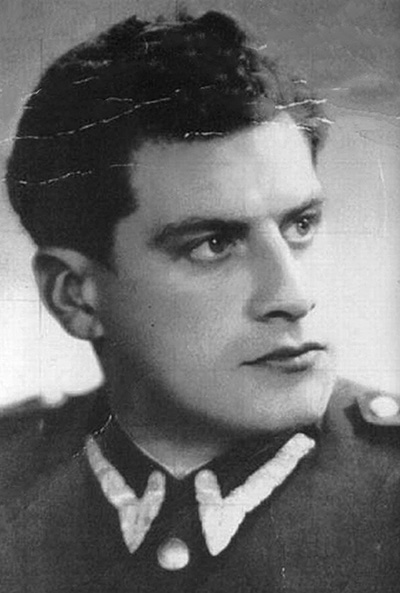
Hanebrink concludes that Europe is again in the grip of the Judeo-Bolshevik myth, this time with Muslims playing the role of Jews and Islamism of Bolshevism. “[E]erie similarities connect the two episodes, despite their significant differences,” he observes, and he cites some troubling parallels. In both cases, nationalists and defenders of a community of values “called Christian Europe, or Western Christendom, or simply the Occident” mobilize support by pointing to an enemy—an “ethno-ideological enemy who spread mayhem and terror. Nearly a hundred years later, echoes of the fears that crystallized around the Jewish Bolshevik . . . could be heard . . . in debates about a new ethnoreligious threat . . . the radical Islamic terrorist.”
The error in Hanebrink’s reasoning is, I think, a subtle one. It is entirely possible that the image of the dangerous Muslim draws, at least in part, on a mythology already available and charged with emotion. The problem is that even if that is true, Islamist terrorism may be a real, not purely imagined, threat. By Hanebrink’s reasoning, it wouldn’t matter if such terrorism should grow a hundredfold. It would still be a myth because reactions would still draw on the old tropes of Judeo-Bolshevism.
Here too I think Applebaum’s approach, in which views are interpreted rather than pathologized and in which historical crimes are not minimized, makes for an instructive contrast. Consider her account of the case of Salomon Morel, a Polish Jew and Communist partisan, from the perspective of opposing sides. In 1945, Morel was commandant of a labor camp for Germans on the site of what was once an auxiliary camp for Auschwitz. Then he became an employee of the Polish secret police, achieving high rank and becoming commandant of a prison. After the fall of Communism, he emigrated to Israel.
A Polish prosecutor discovered that Morel was known for his cruelty to German prisoners, including women and children: starving and torturing them, beating some to death, and letting hygiene deteriorate to the point where some eight hundred prisoners died in a typhus epidemic. The interior ministry, never famed for humanitarianism, held him responsible and docked his pay. In view of these actions, the prosecutor accused Morel of war crimes and asked Israel to extradite him. The Israeli ministry of justice replied furiously that Morel was not a war criminal but a victim who had witnessed a Polish officer murder his family during the war. It rejected the description of conditions at the camp Morel ran and accused the Polish prosecutor of anti-Semitism. “The Poles,” Applebaum writes, “felt that the Israelis were hiding a typical Communist criminal. The Israelis felt that the Poles were attacking a typical Jewish victim.” She then works through the historical facts each side had in mind. By the end of her account we recognize that whatever Morel was, he was not typical of anything:
He was a Holocaust victim, a communist criminal, a man who lost his entire family to the Nazis, and a man consumed by a sadistic fury against Germans and Poles—a fury that may or may not have originated from his victimhood, and may or may not have been connected to his communism. . . . In the end his life story . . . only proves how difficult it is to pass judgment on the people who lived in the most shattered part of Europe in the worst decades of the twentieth century.
In his pamphlet Christianity and Anti-Semitism, Berdyaev confessed that “For us Christians the Jewish problem does not consist in knowing whether the Jews are good or bad, but whether we are good or bad.” Perhaps any examination of horrible ideas and deeds must always be a revelation of ourselves.
Suggested Reading
The Rebbe and the Professor
After the war, the great Jewish historian Salo Baron wrote to Rabbi Yosef Yitzchak Schneersohn, the sixth Lubavitcher Rebbe, for help with his work on the Commission on European Jewish Cultural Reconstruction. As Hannah Arendt suggested in a side note to Baron, the commission probably wasn't “kosher” enough for Schneersohn, but their exchange illuminates a dark historical moment.
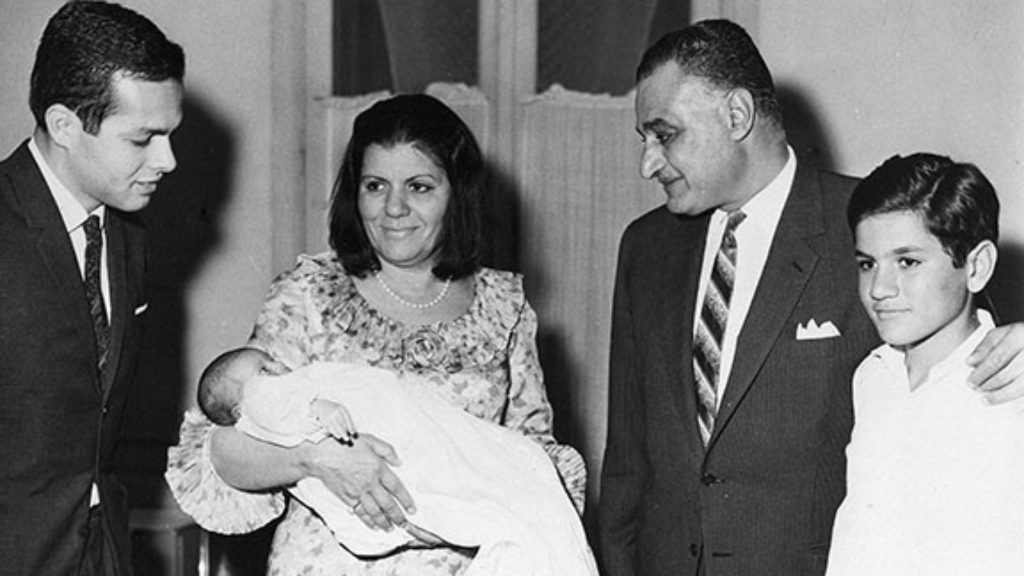
Our Kind of Traitor
More than 40 years after the Yom Kippur War, some of its battles rage on, including the debate over the spy Ashraf Marwan’s true loyalty.
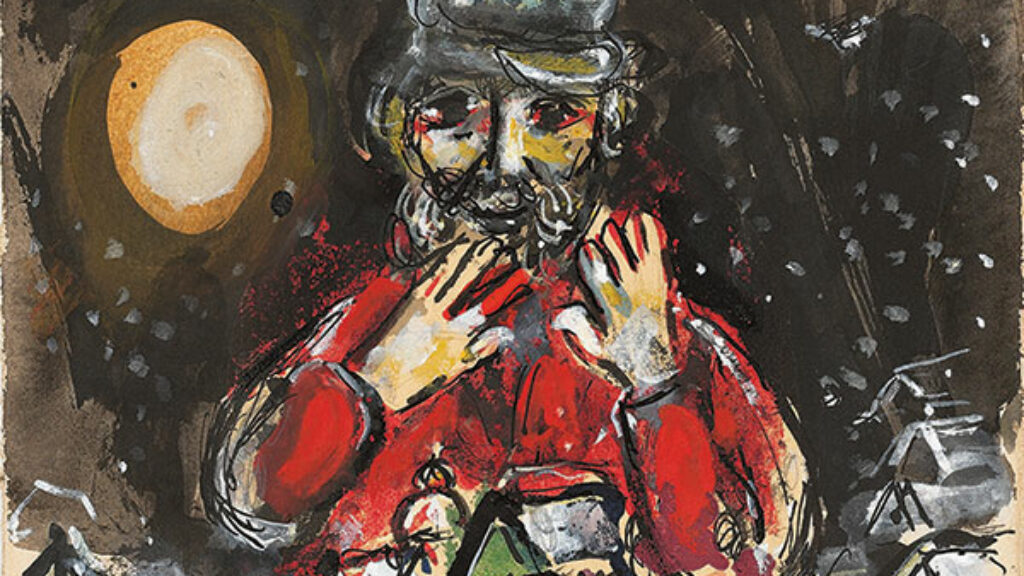
Screwball Tragedy
Picture a Jewish town, located deep in a Polish forest, that hasn’t received so much as a postcard from the outside world in more than a century. Max Gross conjured it up The Lost Shtetl: A Novel, and the result is both screwball and serious.
Tweets and Bellows
What happens when our writers and thinkers express themselves through Facebook, Snapchat, and Twitter instead of on the page?
Comments
You must log in to comment Log In